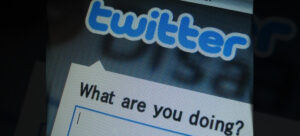Last week, Twitter launched new features to its Direct Messages (DM) channel. These features aim at creating a better conversational experience between the brands and its customers.
- Welcome Messages: It’s an automated message which sets the expectation with the customers as they enter a DM conversation
- Quick Replies: These will prompt customers with the best reply to a DM. These replies are useful for chat-bots because they minimize efforts and save time. Brands can send a list of options for a customer to choose from or ask them to text about the query.

Twitter’s announcement of introducing chat-bots for its DM channel is well suited to all the efforts the company puts in to highlight its customer management properties. According to a survey report:
- Responding to customers on Twitter increases word-of-mouth and likeliness to recommend a brand.
- Customer satisfaction: 44% of customers are likely to share a positive experience after receiving a positive response on Twitter as compared with other channels.
- Willingness to spend: On an average, responding to Tweets boosts customer’s willingness to spend on a brand varies from 3% to 20%.
- Faster the response, greater the revenue: Studies clearly show that responding in 5 minutes or less hugely impacted the willingness to spend on the next transaction.
Foreseeing immense potential of the chat-bots, brands have started to invest heavily in them. Tasks ranging from scheduling a meeting to helping a customer for purchases, from weather reporting to traffic assistance, a number of brands and publishers have already deployed bots on messaging and collaboration channels.
Twitter’s chat-bot for DM will help businesses create a rich and responsive experience opening up new possibilities for how people engage with businesses. On the other side, the more the customer grievances stay inside DMs rather than on public timeline, the happier businesses are likely to be.
Let’s see how consumers, as well as brands, respond to the new feature of Twitter, ‘the automated bot on direct messages’.




0 Comments